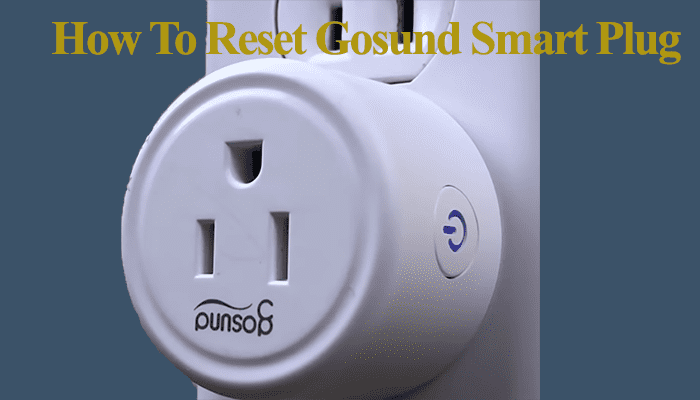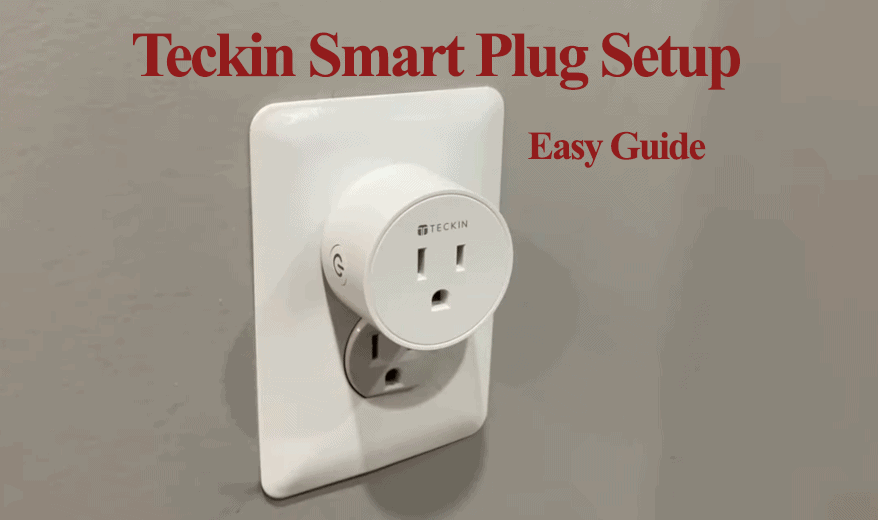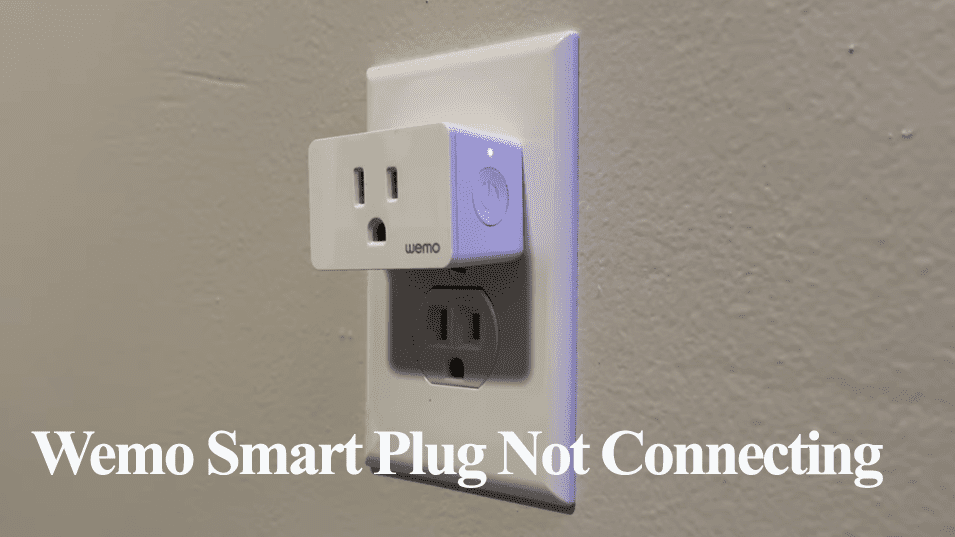Smart plugs are arguably the most affordable way of transforming wired devices into smart devices. Smart plugs allow you to easily manage, remotely control, schedule, and incorporate with your virtual assistant. All this is possible once the plug is hooked to your home network via a compatible app. Therefore, none of these features are attainable when the smart plug won’t connect to Wi-Fi. All you have is an extra device on your home setup.
Dealing with connection issues can be frustrating, especially when nothing seems to give. But worry not; I’ll walk you through the troubleshooting tips to connect your smart plug.
Why Is My Smart Plug Not Connecting?
The smart plug won’t connect because you’re using an incompatible Wi-Fi network, your router settings prevent new device addition, or you have an active VPN or adblocker software on your mobile device. Ensure you use a 2.4 GHz Wi-Fi network and disable your VPN when setting up new smart devices.
That said, a couple of factors affect the connectivity process when setting up smart plugs. Here are some;
- Trying to connect to the 5 GHz Wi-Fi network. Like most home products, smart plugs only support the 2.4 GHz Wi-Fi frequency band.
- Running a VPN or Ad-guard on your mobile device. This masks your device’s IP address; it can’t access other devices on your network.
- Router settings like MAC address filtering, Firewall, or Port blocking
- Using the wrong app to setup the plug
- The plug isn’t within your network’s range
- Not allowing the necessary location or Bluetooth permission
- The plug isn’t in pairing mode – the indicator flashes rapidly
- A faulty device
The connection problem stems from the plug or within your network. First, ensure you have an active internet by accessing webpages.
Smart Plug Won’t Connect to Wi-Fi – Troubleshooting
A problem with the smart plug, app, or home network could prevent the plug from connecting successfully. This calls for your troubleshooting skills to identify and fix the root cause.
Most smart plug brands have a dedicated app primarily developed by the brand to connect their smart devices. Some of the less popular brand apps have connectivity issues.
I highly recommend using the Smart Life app if your plug is from less-known brands like TanTan, Teckin, Intertek, etc. These brands are “Tuya Compatible”; set up the plug via the Smart Life or Tuya apps.
The Smart Life app is reliable and compatible with most brands.
As with all smart devices, ensure your mobile device is connected to the same network and disable your VPN and ad guard software when connecting your smart plugs.
When setting up the plug, be keen to grant permission as prompted by the app. The app needs Location and Bluetooth permissions to access a device on your network.
Here is a troubleshooting guide to help identify and fix your connection problem;
Check Your Network Settings
As stated, Smart plugs only support the 2.4 GHz Wi-Fi frequency band. Therefore, ensure that your router broadcasts a 2.4 GHz Wi-Fi network.
If your router has 2.4 and 5 GHz frequencies on a single SSID, separate them to avoid conflicts. Alternatively, turn off the 5 GHz option when setting up the plug; once it’s paired and working, turn back on the 5 GHz frequency.
To manage your router settings, log in to the admin panel. Find the default login details at the bottom of your router or contact your ISP provider for guidance.
Also, ensure the network security encryption is set to WPA or WPA2 and the Authorization type to AES. Newer protocols like WPA3 can cause connection problems.
Finally, check the MAC address filtering setting and ensure it’s toggled off. It could prevent the authorization of devices from joining your network. Thus, causing a connection failure.
Ensure you use a strong and stable internet connection when setting up the smart plug. With solid internet, the server communication is effective, and the plug is quickly bound to your account.
Once you have made changes, reboot the router to apply them and reconnect your devices.
Move The Plug Closer
To ensure a strong and stable internet connection, ensure the plug is close to the router during setup.
Placing your plug at the furthest corner of the house is a sure way of getting yourself stuck on the connecting stage. The Wi-Fi signal weakens as you move away from the router, and the number of obstacles increases.
Also, you can get a Wi-Fi extender or install a mesh network setup to spread the Wi-Fi signal strength evenly.
Once you have moved the plug closer, refresh the smart app and retry the setup process.
Disable Your VPN and Ad guard
If you have an active VPN or Ad guard software on your mobile device, turn it off when connecting your plug to your Wi-Fi network.
The VPN masks your device’s IP address and won’t discover new devices connected to the router.
Disable the VPN and restart the device to refresh your network connection; once your phone restarts, try connecting the plug.
Again, an Adblocker or Ad guard can have the same effect as a VPN. If your device has an ad guard, temporarily turn it off to add your plug to the app.
Reset The Plug and Reconnect
The plug must be in pairing mode to be detected by the app during the initial setup process. When in pairing mode, the plug’s status indicator blinks continuously. The specific color depends on your brand. This allows you to set up the plug via EZ mode.
To reset your plug, press and hold the reset button for 5 – 10 seconds. The plug enters pairing mode – the LED indicator flashes rapidly.
Try reconnecting your plug through the app with your mobile device connected to the same network. Also, turn off your mobile data during the setup process.
Connect The Plug Through AP Mode
AP mode allows you to connect to the device’s network. It’s the go-to option when one is experiencing network connection issues.
Some apps and brands offer the AP mode as the alternative when the EZ pairing mode fails. Smart Life and Gosund apps are good examples that allow AP mode pairing.
To connect your plug through AP Mode, perform a double reset to enter the slow flashing setup mode. Connecting to the plug’s hotspot helps you confirm that the device is in pairing mode and not faulty.
First, perform the normal reset by pressing the reset button for 10 seconds. While the plug is quickly flashing, perform another reset.
This double reset hack works on some models. I hope that your plug’s brand supports it.
Here’s how to set up the plug in AP mode via Smart Life;
- Launch your Smart life app – you already have downloaded the app and set up a user account.
- Tap the “+” icon > select “Add Device” option
- Tap Electrical from the list of device categories
- Choose your device type > Socket (Wi-Fi). Choose the option appropriate for your plug device
- Choose your 2.4 GHz Wi-Fi network and enter your password. Hit Next
- Double Reset the plug to enter pairing mode. Once your plug is slowly blinking, tap “Next” several times on the app.
- Select the first status (Blink Slowly) to set up in AP mode
- Connect to the device’s hotspot. Tap the “Go to Connect” button to open your phone settings and connect to the “SmartLife-XXXX” or “SL-XXXX” network. Return to the Smart Life app after connecting > tap Confirm hot spot connection next.
- Device connecting. Let the app find, register, and initialize your device. Once it’s located, name it and tap Done to finish up.
This solution should help get your plug connected to the Smart life app. Once your plug connects, here is a guide to link it to your virtual assistant (Alexa or Google Assistant).
Bonus Solutions
Try these bonus solutions;
Uninstall and reinstall the app – You could be experiencing a connection failure due to an outdated app. First, clear the app cache, and check if any updates are available on your respective app.
If an update is due, download and install it on your device and try reconnecting your plug. If the update method fails, uninstall and install the app afresh.
Try a different mobile device – It could be that your mobile device has corrupt Wi-Fi settings or files preventing the plug from connecting. Try a different device, preferably one with a different OS, and try the setup process.
Faulty device – No matter your efforts, a defective device won’t connect. A clear sign that the device has an issue is when it won’t broadcast its Wi-Fi hotspot in AP mode. In such a scenario, contact the brand’s customer service for a replacement or guidance.



